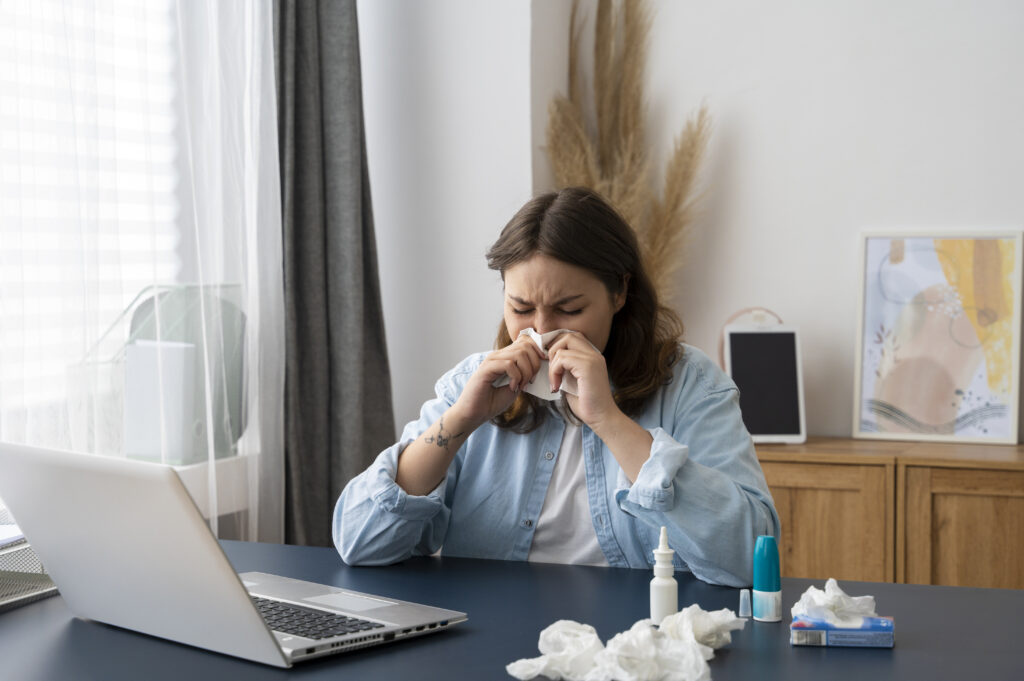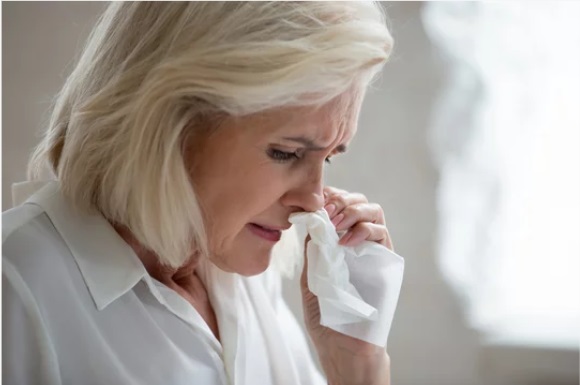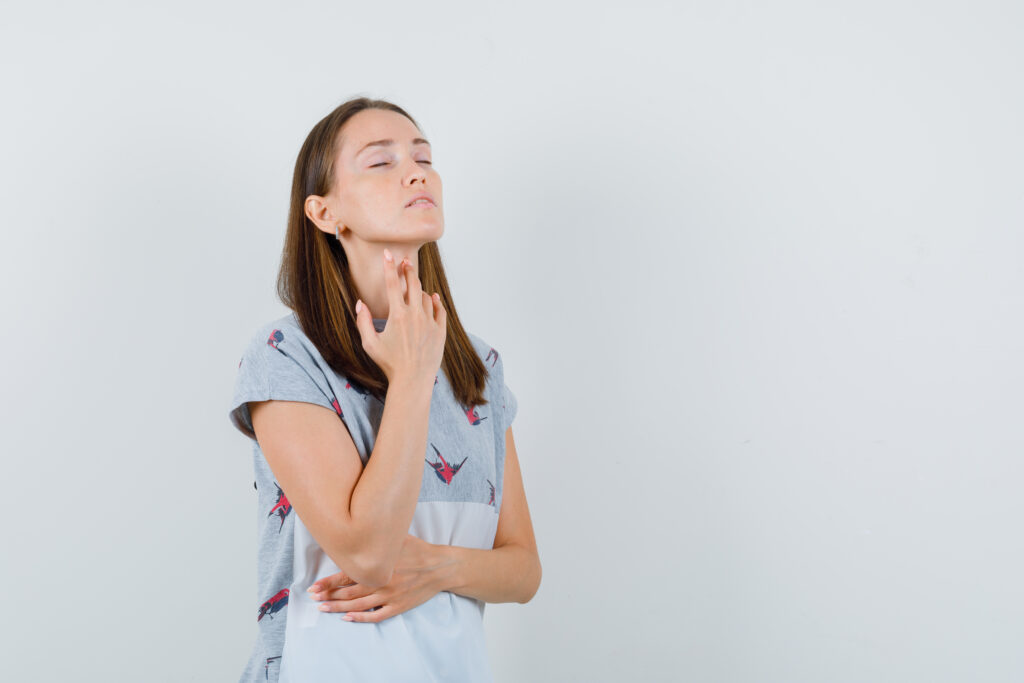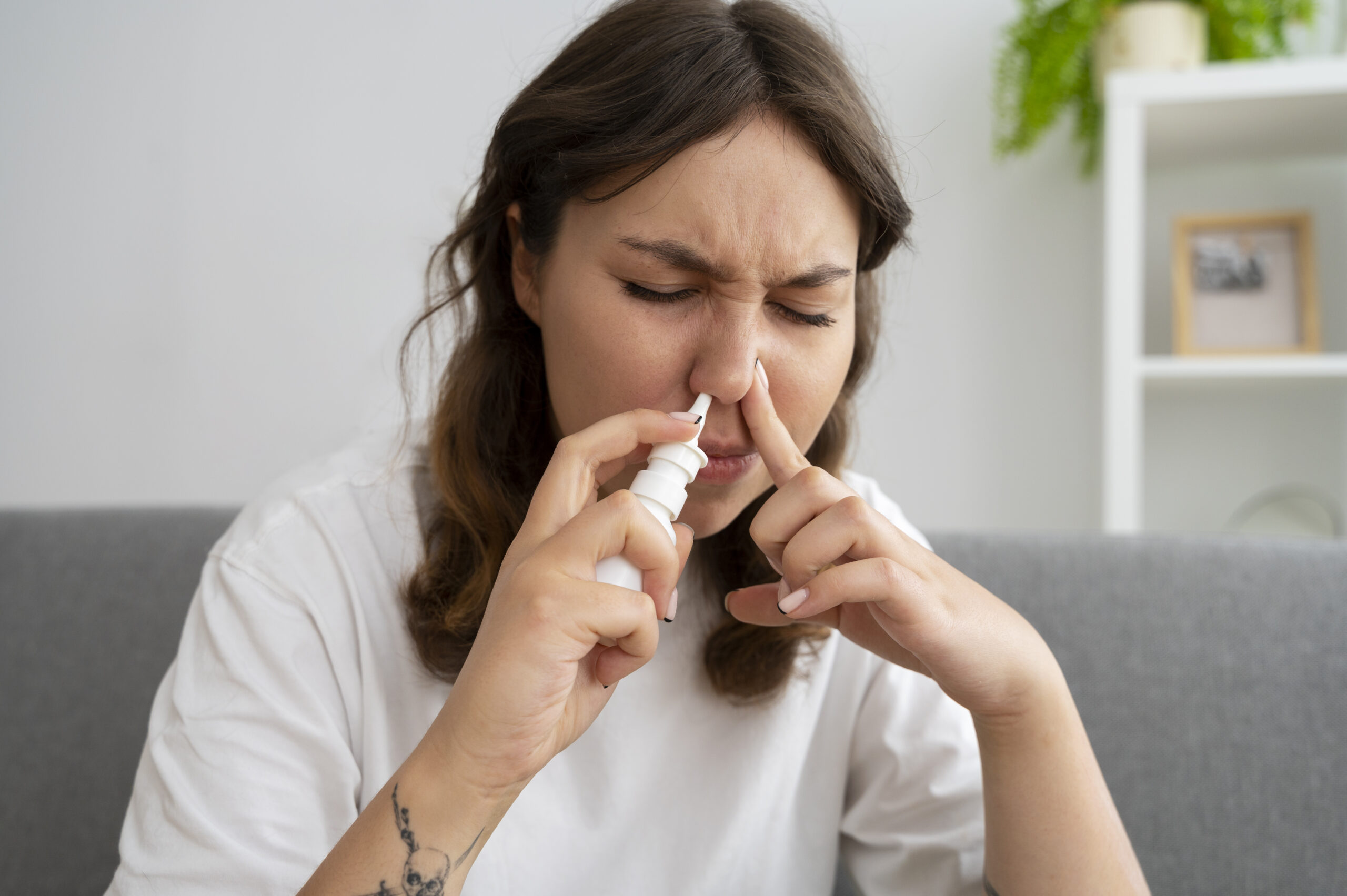Approximately 10% of the population suffers from chronic or recurrent nasal symptoms. The prevalence of Non-Allergic Rhinitis (NAR) in otolaryngology practice is on, and average, about 40%.
In many cases, it is difficult to differentiate NAR from Allergic Rhinitis.
Allergic Rhinitis (AR) is more common than Non-Allergic rhinitis (NAR). Quite commonly, patients have mixed features of both NAR and AR.
Both conditions have similar presentations, manifestations, and treatments.
Non-allergic rhinitis presents with all the symptoms of AR (such as rhinorrhea, congestion, and sneezing), but these patients have a NEGATIVE allergic history, skin testing, and nasal cytology.
Nasal itching and paroxysmal sneezing are usually lesser with NAR in comparison to AR.
Other common terms used for NAR are vasomotor rhinitis and perennial rhinitis.
Pathophysiology
The nasal mucosa has a rich blood supply, which is similar to the erectile tissues that have venous sinusoids or “lakes” surrounded by smooth muscle fibers. These smooth muscle fibers act as sphincters and control the filling or emptying of sinusoids.
Sympathetic stimulation causes Vasoconstriction (means shrinkage of blood vessels) and shrinkage of mucosa (decongestion of the nose). At the same time, parasympathetic stimulation causes not only excessive secretion from the nasal glands (rhinorrhea) but also vasodilation ( means opening up of blood vessels) and engorgement (congestion of the nose).
The autonomic nervous system, which supplies the nasal mucosa, is under the control of the hypothalamus. Therefore, emotions play a significant role in NAR.
The autonomic nervous system is NOT stable in cases of NAR.
Nasal mucosa becomes hyperreactive and responds unduly to several non-specific stimuli, such as changes in temperature, humidity, blasts of air, and small amounts of dust or smoke.
Classification of NON-ALLERGIC RHINITIS (NAR)
In cases of NAR, nasal mucosa responds unduly to various stimuli and produces symptoms of NAR, such as rhinorrhea, congestion, and sneezing.
Some of these conditions have been given specific terms, which are categorized under the NAR (vasomotor rhinitis).
1) Non-Allergic Rhinitis with Eosinophilia
Patients of Non-Allergic Rhinitis with eosinophilia (NARE) have perennial symptoms with episodes of watery discharge, itching, sneezing, and epiphora.
They have negative or irrelevant reports by skin or in vitro allergy testing.
The specific allergy triggers are absent, but aggravating factors usually include weather changes and exposure to chemical irritants. The nasal smear shows marked eosinophilia.
2) Drug-Induced Rhinitis
Several ANTI-HYPERTENSIVE DRUGS, such as beta-blockers, alpha-blockers, angiotensin-converting enzyme (ACE) inhibitors, and vasodilators, can result in nasal congestion and stuffiness.
The ANTICHOLINESTERASE DRUG (Neostigmine) used in myasthenia gravis have acetylcholine-like action, which may affect the nasal mucosa.
ASPIRIN and NSAID are well known to cause sinusitis and asthma.
Contraceptive pills (Estrogen) can cause nasal obstruction.
3) Rhinitis medicamentosa
The long-term use of topical nasal decongestants such as Oxymetazoline (Otrivin®), Xylometazoline (Nasivion®), etc., causes rebound congestion in the nose and leads to rhinitis medicamentosa.
It usually affects people who use these sprays for 7-to-10 days or longer.
Treatment of Rhinitis Medicamentosa:
- It consists of slow and complete withdrawal of topical decongestant,
- Oral and/or topical steroid therapy is the most beneficial
- Saline nasal spray
Surgery is RARELY required. However, a surgical reduction can be considered if the rhinitis medicamentosa patient has hypertrophied turbinates.
4) Honeymoon rhinitis
Too much sexual activity can lead to nasal congestion and rhinorrhea.
5) Emotional rhinitis
Nose mucosa may react to several emotional conditions, such as anxiety, tension, hostility, humiliation, resentment, and grief.
Treatment of Emotional Rhinitis –
- Counseling for emotional adjustment.
- Imipramine, an antidepressant that has an anticholinergic effect, has been found useful.
6) Hormone-related rhinitis
Hypothyroidism:
In hypothyroidism, there occurs hypoactivity of the sympathetic system with the predominance of parasympathetic activity, which causes nasal congestion and discharge.
These patients need supplement thyroid hormone.
Menstruation:
Fluctuating levels of hormones during menstruation can cause nasal symptoms.
Puberty:
The changing blood hormone concentrations during puberty can result in rhinitis.
Pregnancy:
Pregnant women may develop edema of the nasal mucosa due to hormonal changes. The common nasal symptoms are watery discharge and stuffiness.
The severity of these nasal symptoms parallels blood estrogen levels.
Nasal symptoms decrease towards term because the blood is shunted away from the nose towards the growing uterus.
The persistent congestion may lead to secondary infection and rhinosinusitis.
Treatment of Pregnancy-induced Rhinitis:
Usually, these women respond to limited local measures, such as —
- Saline Drops,
- Steam Inhalation, and
- Topical steroids.
- Limited surgery (cryosurgery) to hypertrophied turbinate is done in refractory cases.
7) Gustatory Rhinitis
The ingestion of hot and spicy food leads to mucoid or watery nasal discharge.
The onset can be immediate and lasts for as long as the food is ingested.
Stimulation of afferent sensory nerves activates the parasympathetic nerves, which leads to nasal gland secretion, sweating, and epiphora.
8) Non-airflow Rhinitis
In laryngectomy and tracheostomy cases, there is no nasal airflow. The turbinates are swollen due to loss of vasomotor control.
Similar changes also occur in cases of choanal atresia or adenoidal hyperplasia.
Stagnation of discharge in the nasal cavity can lead to infection.
9) Idiopathic or Vasomotor Rhinitis (VMR)
When no cause of NAR is found, the condition is termed VMR, which is usually said to be due to an imbalance of autonomic nerve fibers that supply to the nasal mucosa.
It can be either increased parasympathetic or decreased sympathetic activity.
Clinical Features of NON-ALLERGIC RHINITIS –
It is important to note the pattern and timing of symptoms, exacerbating and relieving factors, and environmental triggers.
Exclusion of systemic diseases and hormonal imbalances must be done.
Symptoms of NON-ALLERGIC RHINITIS –
1. Paroxysmal sneezing, especially in the morning while getting out of bed.

2. Excessive rhinorrhea
In some cases, profuse and watery discharge is the presenting and only symptom. The nose may start dripping when the patient bends forward. This needs to be differentiated from CSF rhinorrhea

3. Nasal obstruction
The bilateral nasal stuffiness usually alternates from one side to the other. This is generally more marked at night, when the dependent side of the nose is often blocked.

4. Postnasal drip
Though uncommon, it can be the only symptom.

Examination of NON-ALLERGIC RHINITIS-
Nose
The mucosa is usually boggy and edematous with clear mucoid secretions.
The turbinates are usually congested and hypertrophic.
Pharynx
Mucosal injection and lymphoid hyperplasia can involve tonsils, adenoids, and the base of the tongue seen.
Complications of NON-ALLERGIC RHINITIS-
Nonallergic rhinitis cases which subsequently develop —
- Polyps,
- Turbinate hypertrophy, and
Investigations for NON-ALLERGIC RHINITIS
- Absolute Eosinophil Count (AEC)
- Nasal smear
- Skin and in vitro allergy tests to rule out allergic rhinitis
- Acoustic rhinometry for measuring nasal patency
- Smell testing
- CT scan in cases of sinus disease
- MRI in cases of mass lesions
Treatment of NON-ALLERGIC RHINITIS
Medical Treatment for NON-ALLERGIC RHINITIS
1. Avoidance of inciting factors, including sudden changes in temperature, humidity, blasts of air or dust.
2. Antihistaminics and oral decongestants
They help in relieving nasal obstruction, sneezing, and rhinorrhea.
3. Topical steroids (beclomethasone dipropionate, budesonide, or fluticasone) are useful in controlling symptoms.
4. Systemic steroids are taken in as reserved for complicated and refractory cases.
5. Psychological counseling for emotional adjustment.
6. Exercise is an important adjunct to treatment.
Surgical Treatment for NON-ALLERGIC RHINITIS
A. Reduction of hypertrophied turbinates.
B. Correction of deviated nasal septum.
C. Removal of polyps.
D. Sectioning of the parasympathetic secretomotor fibers to the nose (VIDIAN NEURECTOMY) for controlling refractory excessive rhinorrhea.
THANK YOU
MEDICAL ADVICE DISCLAIMER:
This blog, including information, content, references, and opinions, is for informational purposes only.
The Author does not provide any medical advice on this platform.
Viewing, accessing, or reading this blog does not establish any doctor-patient relationship.
The information provided in this blog does not replace the services and opinions of a qualified medical professional who examines you and then prescribes medicines.
And if you have any questions of medical nature, please refer to your doctor or qualified medical personnel for evaluation and management at a clinic/hospital near you.
The content provided in this blog represents the Author’s own interpretation of research articles.
